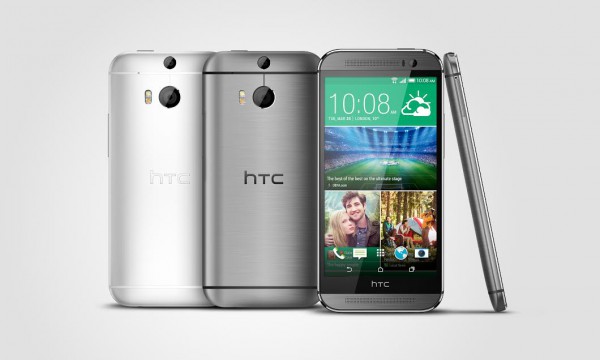Meet HTC's new One (M8)

After a string of unexciting smartphones, last year, HTC wowed Android fans all over the world with the One. For the first time, in my opinion, a smartphone powered by the little green droid looked attractive. It did not take part in the silly specs race, as, at the time, the display was not the largest in its class, the processor was not the fastest around and it was not even the most compact Android smartphone given its specs. However, it performed well and offered unique software features, which, combined with the stunning looks, made it one of the best-received smartphones of the year. Sadly for HTC, it was not quite the sales success the company hoped it would be.
Because the original One set the bar so high, it will be interesting to see how its successor will stack up. It has pretty high expectations to live up to. Luckily, we do not have to wait long to find out, as HTC just took the wraps off the new One (M8). The name is not as inspiring, but it does pack a fair punch.
The Design
The exterior has been the strong suit of the original One. It combined premium materials -- metal, polycarbonate and Gorilla Glass -- with an attractive design. The One (M8), despite what its name suggests, does not represent a radical departure, as HTC used the same types of materials and only altered the look slightly.
It is now more rounded, which should make it more pleasant to hold in the hand, taller and with asymmetrical speakers. It looks similar on the back as well, with the only major difference being the secondary camera which allows users to refocus snapped photos. The buttons are also in the same place. The power key should be, however, placed on the side of the device instead of on the top, where it can be more difficult to press.
The Specs
First off, the One (M8) is bigger. That is due to the large, 5-inch display (as opposed to the 4.7-inch panel found on the One) with a now-standard resolution of 1080 by 1920. It comes in at 146.3 x 70.6 x 9.35 mm and 160 grams (taller, wider, thicker and heavier than the One, and not that far off from the Samsung Galaxy S5, which measures 142 x 72.5 x 8.1 mm and weighs 145 grams).
It is also faster, as it employs a 2.3 GHz Qualcomm Snapdragon 801 processor, that is backed by 2 GB of RAM and a 2,600 mAh battery. HTC does not mention the processor sample which powers its new smartphone, but the likely candidate is MSM8974AB. The One (M8) also offers two storage options, namely 16 GB and 32 GB as well as a microSD card slot alongside each model. The latter is a welcome feature, as users can easily (and cheaply) add more capacity.
On the back of the One (M8) is the Duo Camera setup, which is comprised of two dedicated cameras. The main one is a 4 MP shooter with an f/2.0 aperture, which should ensure great low-light photos, accompanied by a secondary one which enables refocusing (the concept is similar to the Lytro camera and the Nokia Refocus Windows Phone 8 app). On the front there is a 5 MP camera with wide-angle lens and HDR. On both sides, the One (M8) is capable of 1080p video recording. It also features BoomSound stereo speakers on the front.
Other specs include the usual suspects: 4G LTE cellular connectivity, Wi-Fi 802.11 a/b/g/n/ac, Bluetooth 4.0 LE (Low Energy), NFC (Near Field Communication), DLNA, GPS, and a microUSB port.
The Android Bit
As you might expect, Android 4.4.2 KitKat is HTC's operating system of choice for the One (M8). The Taiwanese maker has customized the distribution with Sense -- it is at version 6.0 now. The skin adds branded apps and services, like BlinkFeed. The smartphone does away with hardware (capacitive) buttons, as it has soft keys instead on the front. A Google Play Edition of the device will also be available, sporting a version of Android 4.4.2 KitKat that is closer to AOSP.
When and How Much?
The One (M8) will be available, starting today, in US and Canada and, "by the end of April", across the globe . Available color options include gold, gray and silver. The price of the handset will vary depending on the market and local taxes, but it will cost $199.99 at US mobile operators. That is on par with what its predecessor went for at launch.